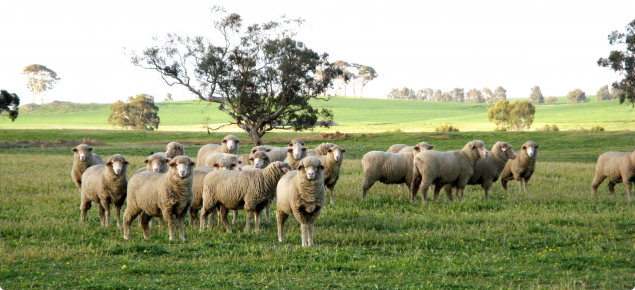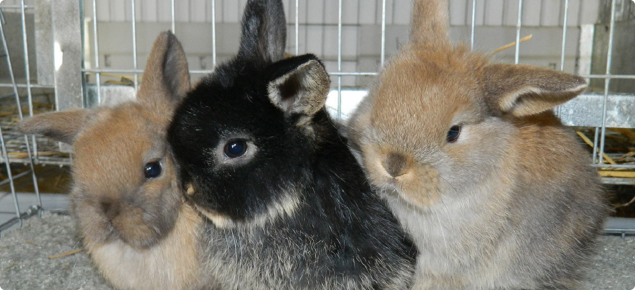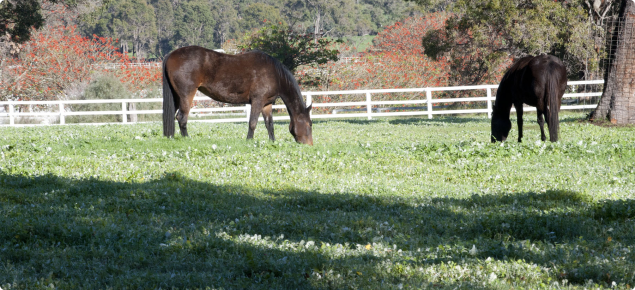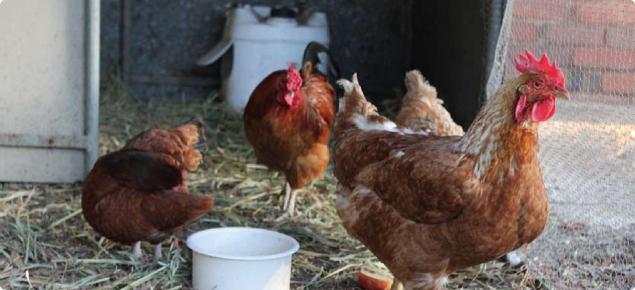All owners and carers have a duty of care to provide appropriate food, water, shelter and treatment for injury or disease for their animals.
Improve your animals’ safety and survival in case of emergency by planning and preparing:
- an emergency plan
- an emergency kit
- removal of hazards around your property
- evacuation and relocation (safer areas)
- animal identification.
Emergency plan
Prepare an emergency plan that covers the major hazards which have the potential to impact on your family, animals and property. When planning for your animals, you should include notes about:
- which animals to evacuate, and for those unable to be evacuated, how they will be managed and sheltered to best ensure their safety and survival
- transport options for large and small animals, depending on circumstances
- evacuation routes from your property for different types of hazards (e.g. fire, flood)
- what your triggers are for evacuation or moving animals to safer areas (e.g. high risk days, emergency alerts)
- safer areas of lowest risk to move livestock that are unable to be evacuated (e.g. paddocks with no vegetation during fire risk, paddocks on higher ground during flood risk)
- animals agisted elsewhere including on other people’s properties, and agree on appropriate actions with the landowner
- access to large volumes of water in case of fire - mains supplied services such as water, electricity and gas are likely to be unavailable in an emergency
- research into emergency accommodation options (family, friends, animal shelters or other potential locations well away from the hazard) with facilities for animals
- preferred veterinary services and animal emergency services (e.g. regular vet, 24hr emergency clinics) in case of animal injury or disease
- identification information for each of your animals so you can be contacted should you be separated
- how you will maintain containment (e.g. fencing) and the provision of food, water and shelter for your animals after an emergency has passed.
Remember to take special note of and consider your plans for animals you might not normally move or transport, such as chickens, reptiles and livestock kept as companion animals.
Discuss your plan, record it, and practice it. Your emergency plan should be regularly reviewed and updated. To get started planning for your animals welfare in an emergency, visit Tools and useful links and Pause for your PAWE.
Emergency kit
Assemble an emergency kit containing basic necessities and important information for you and your animals. The kit should include information and items you can use at home or take with you in case you must evacuate, for example:
- at least two to three days of feed and water
- halters and leads
- rugs
- first aid kit and medications
- relevant documentation (animal identification information, certificates of vaccination, vet details etc)
- your name, phone number and address in case the animal is boarded in separate accommodation to you.
Prepare an emergency kit for your animals ahead of time and keep it in a prominent place.
Preparing the property
By preparing your property, you can make it easier to care for the welfare of your animals in an emergency. This may include:
- fitting gates on internal fences to avoid moving stock along public roads
- ensuring your animals always have a water supply that will last them at least five days, even if you expect to be home that evening
- purchasing emergency fodder and food supplies and storing them in a safe place, preferably under cover and above flood levels
- marking gates, food and water locations on a map of your property, and having the map in an easy to find place in case someone has to move animals for you
- identifying areas of the house where smaller companion animals would be able to take shelter
- identifying available safety equipment on property and installing fire extinguishers, sprinkler systems and smoke detectors
- removing or clearing flammable items, especially near where animals might be kept, and removing rugs and halters from horses as these can often burn or melt
- identifying or creating areas of higher ground where animals might be kept in flood prone properties
- securing loose objects around the home that may become airborne during high winds and cause damage to animals and property
Preparing your property and having an appropriate survival plan helps you make the right decisions in an emergency and make it safer for your animals. The Deaprtment of Fire and Emergency Services (DFES) has developed the 5 Minute Fire Chat to help property owners understand their risk, make a plan and prepare their property. For further information visit the DFES website.
Evacuation or relocation (safer areas)
If animals are likely to be at risk, every effort should be made to arrange to take them to a safer area in advance.
Depending on the animal, this might be to take them away from your property to relatives, friends, animal boarding facilities or to a temporary animal shelter. Due to health and safety considerations, animals are generally not permitted inside community evacuation centres with the exception of recognised assistance animals, so it is best to have alternative arrangements in mind.
Where taking an animal off property may not be possible, consider relocating the animal to a safer area within your property. If an emergency warning is current or on days of extreme risk, consider moving stock into a safe area before leaving your property for any length of time, and preparing access to safer areas for companion animals in case you are unable to return.
Practising moving animals and making them familiar with transport and containment (e.g. crates, cages, animal floats) will help reduce stress to the animal during an evacuation and make handling the animal safer for the owner or carer.
For more information on evacuating or relocating animals in emergencies, see Responding to animal welfare in emergencies.
Animal identification
In an emergency situation it’s important that livestock and companion animals can be identified to help facilitate their return in case they become lost. Effective methods of identification include brands, National Livestock Identification Service (NLIS) devices, microchips and name tags.
To be best prepared:
- ensure your animal identification and registration is up to date, including with your vet and local government
- for livestock, ensure your NLIS and Property Identification Code (PIC) details and, where appropriate, your insurance records are up to date and kept in a safe place, including keeping copies with your emergency kit
- microchip and register horses on a licensed registry
- attach a permanent disc to your companion animal’s collar that clearly states your phone number, name and address and ensure pets are microchipped (attach a leg band for birds)
- have recent photos of your animals, which can assist in confirming identification
- keep animal vaccinations up to date
Read further on Responding to animal welfare in emergencies.






